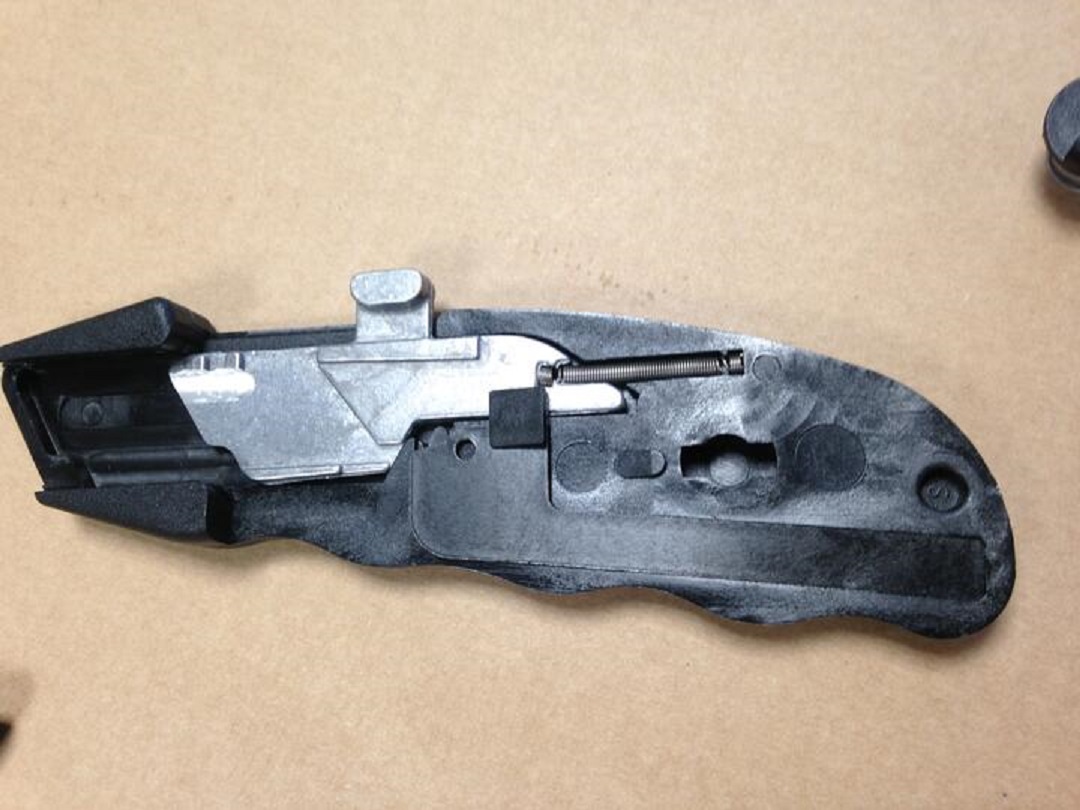
Engineers at the University of Sheffield Advanced Manufacturing Research Centre (AMRC) have used software to simulate 3D printing a metal knife.
The knife manufacturer, Safety Knife Company, was looking into ways to make an alloyed blade carrier for the ReAkta Knife, which has a retractable blade, the company said.
‘Originally we had the part machined and more recently we have had them cast in aluminum; but both have meant an awful lot of quality problems and the components need to be fettled manually to achieve the required fit,’ said David Harris, general manager of Safety Knife. ‘What we wanted from the AMRC was to research how viable it would be to use additive manufacturing (AM) 3D printing to make this blade carrier part.’
The AMRC simulated the manufacturing process and conducted a feasibility study to determine whether laser powder bed fusion (L-PBF) is a suitable manufacturing process for the aluminum alloy components required for the blade carrier.
‘We were able to review component design in line with AM considerations, establish manufacturing process times based on the L-PBF process and use process modelling to identify production levels and the associated cost of manufacture,’ said project engineer James Cantle. ‘We suggested some component modification to optimise the manufacturing process. Using honeycombing on the component saved a significant amount of weight and vastly reduced the material required.’
‘We already knew the component could be 3D printed incredibly accurately, but we lacked the ability to determine if it was financially viable for us and it was invaluable to be able to put that task in the hands of people who knew how to find that out,’ added Harris. ‘Even though the conclusion was that it wasn’t viable, at least we got to a point where we knew it wasn’t an option and it has pushed us down the route of machining the component again.’
This story uses material from the AMRC, with editorial changes made by Materials Today. The views expressed in this article do not necessarily represent those of Elsevier.





